What is Beauty? Beauty is in the eye of the beholder, or so the saying goes. Beauty can be described as a combination of qualities that pleases the senses. Although, what one person views as “beautiful” may not be “beautiful” to another.
I happen to be one of the many people who can see the beauty in the Migratory Birds of San Antonio-the Egrets and Herons that make the long journey each year to breed here, droppings and all.
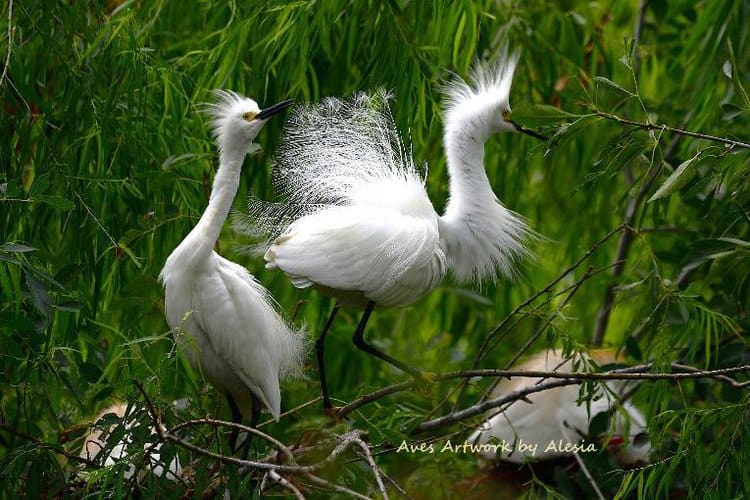
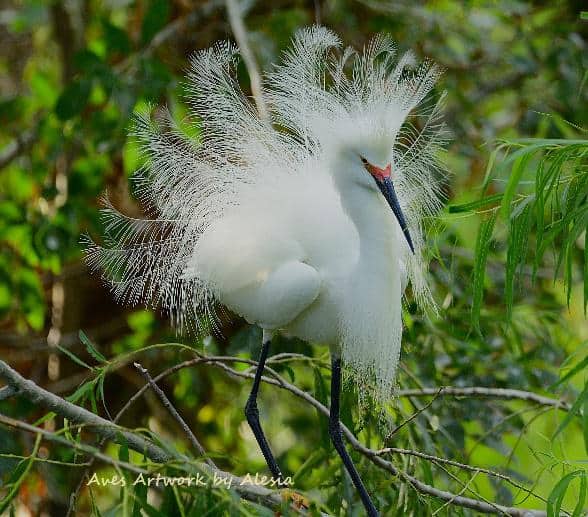
And I’m not alone! According to an article published by allaboutbirds.org., which shared the results of a 2022 U.S. Fish & Wildlife Service (FWS) National Survey of Fishing, Hunting, and Wildlife- Associated Recreation.
“One third of American Adults are Birdwatchers-around 96 million people in the U.S. closely observed, fed, or photographed birds; visited public parks to view birds in 2022.”
“The USFWS survey also shows that birding is big business. More than six out of every 10 dollars spent in 2022 on wildlife-related recreation (which also includes hunting and fishing) came from wildlife watching, with birds cited as the greatest focus for wildlife watchers. Altogether, wildlife watchers spent more than $250 billion last year to engage in their hobby—including more than $24 billion on equipment such as binoculars, cameras, and bird food.”
A Third of American Adults Are Birdwatchers, According to Nationwide Survey
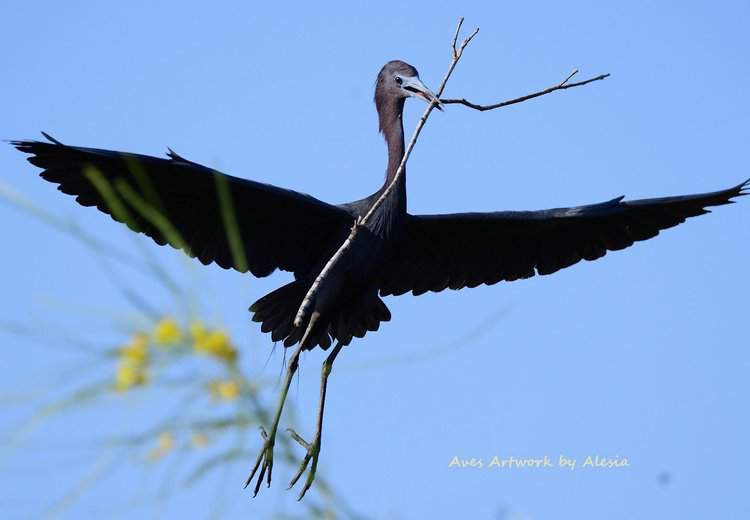
From Birders, to Artists, to Educators and just everyday nature lovers we all can look beyond the noisiness of nature along with the poop and see the bigger picture, these birds are beautiful!
Just ask former President of the United States, Bill Clinton, who in 2001 signed Executive Order 13186-Responsibilities of Federal Agencies to Protect Migratory Birds. The Order directs executive departments and agencies to take certain actions to further implement the Migratory Bird Treaty Act. Section1. Policy: Migratory Birds are of great ecological and economic value to this country and to other countries.
Migratory Bird Conservation; Executive Order 13186
The Woodswoman shares her thoughts on the Woodswoman writes, “writing and photos about whatever strikes my fancy.” She tells us, “The third post in the Finding Beauty series, a reminder when I’m caught up in this year’s unsettled times that nature continues in its rhythms. While visiting a local wetland recently, I realized that no matter how many times I see different egrets and herons, with each sighting, I am struck by how beautiful and graceful they are.” You can learn more on her website.
Finding Beauty Series – Egrets and Herons

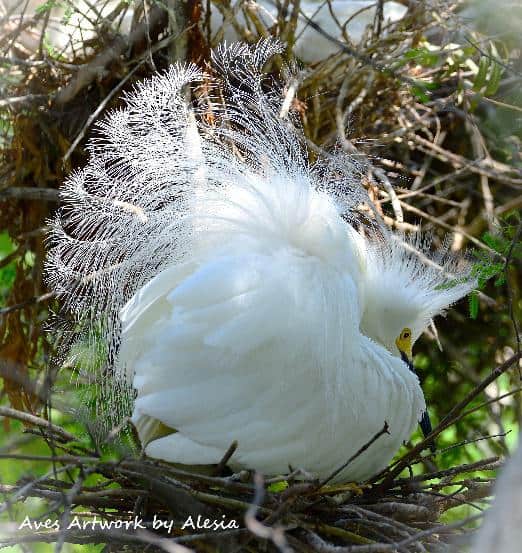
During nesting season, the Waterbirds are beautiful in vibrant breeding colors of orange plumage, bright pink and green facial features along with long and delicate flowing veil like tail feathers on full display during courtship. Great Egrets, Snowy and Cattle Egrets, Little Blue Herons, Green Herons and Cormorants all come together to roost and to attempt to successfully breed offspring.
The birds must then make the long journey south facing extreme temperatures and drought conditions, loss of habitat caused by natural disasters and disturbance by humans.
According to David Stroud, former Senior Ornithologist at the UK’s Joint Nature Conservation Committee: “The ecological effects of a changing climate are already having significant consequences for the conservation of migratory waterbirds – changing distributions and influencing populations. As they undertake their annual migrations, these migrants use sites in many countries. Changes to any of these may jeopardize their ability to complete their migration and influence populations.”
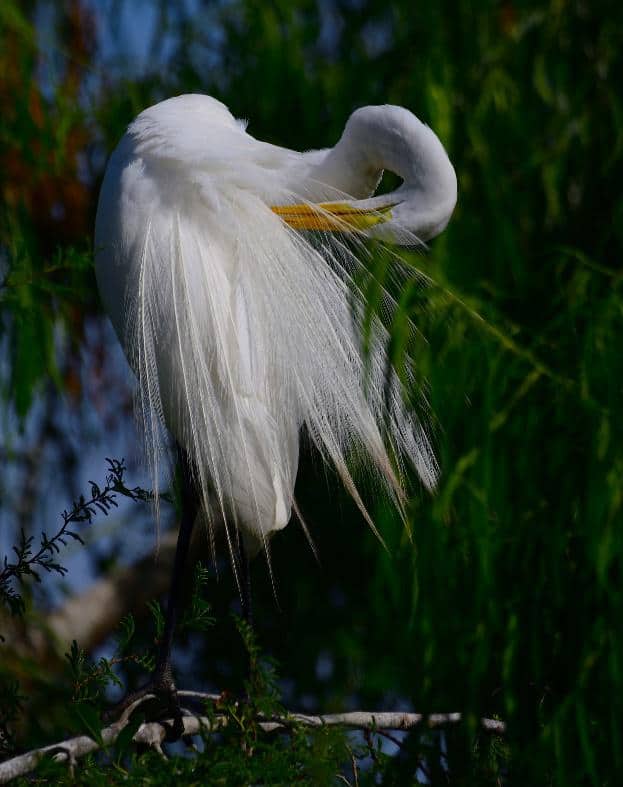
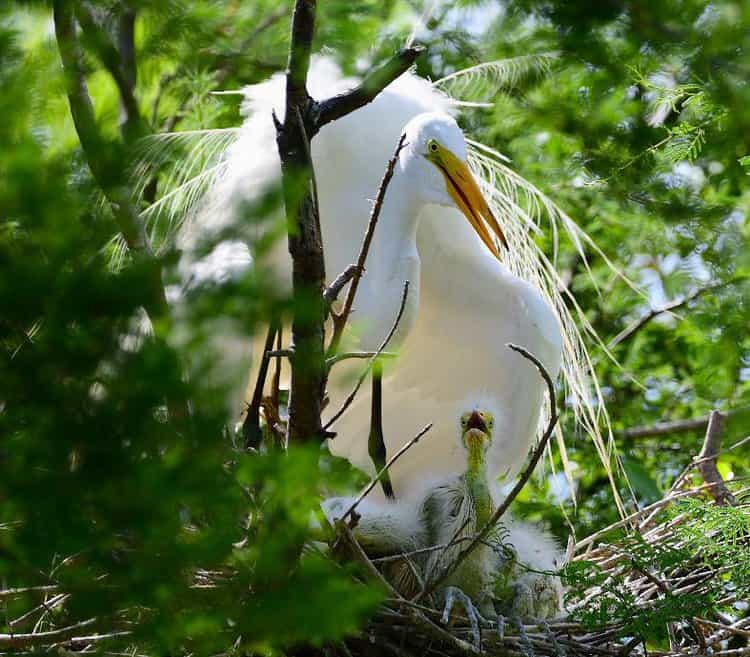
The Beautiful people: Beauty can be found in humans such as those working at Houston’s SPCA. The group came to the rescue of hundreds of Egrets impacted by Hurricane Beryl in Texas in July. According to an SPCA press release, “staff rescued over 1000 wild animals in the two days immediately following the initial storm surge.”
Questions I had for Houston SPCA:
1) Why did you save the birds?
Answer: “Our mission is to improve the lives of Texas wildlife, both through rehabilitation and education. Saving wildlife during natural disasters allows us to give back to species populations that have been negatively affected by human caused problems, such as habitat loss. When we release animals back into the wild, we are in a small part making up for past and future losses to our local ecosystems due to human impact.”
2) Should we have more empathy for our wildlife even if considered a nuisance or otherwise?
Answer: “Wild animals have a strong self-preservation and survival instinct. Part of that drive to endure means adapting to a changing environment, even when it inconveniences us. Our educations programs focus on peaceful coexistence and teaching people that we as humans have forced these animals to change their behaviors, that these animals are doing their best to survive, and that they are not acting out of spite. A little bit of compassion and understanding from us will go a long way towards achieving this peaceful coexistence.
3) How can we help these birds? Provide a safe place?
Answer: “The easiest way to help wildlife survive and thrive is by caring for our environment. Leave natural areas in your yard for wildlife to take shelter in. Plant native plants and trees. Get active in our community and help keep the Houston area clean. Help protect our parks and nature preserves by visiting and contributing to them. And if you do find a wild animal in need, reach out to a local wildlife rehabilitator. Learn how you can help here: www.houstonspca.org
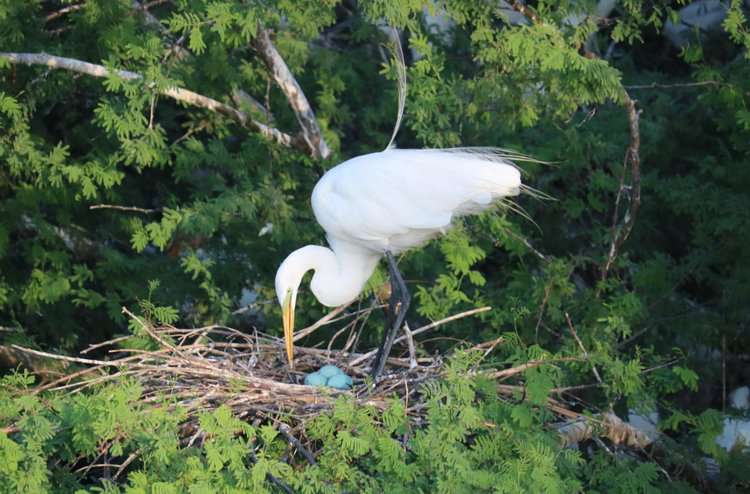

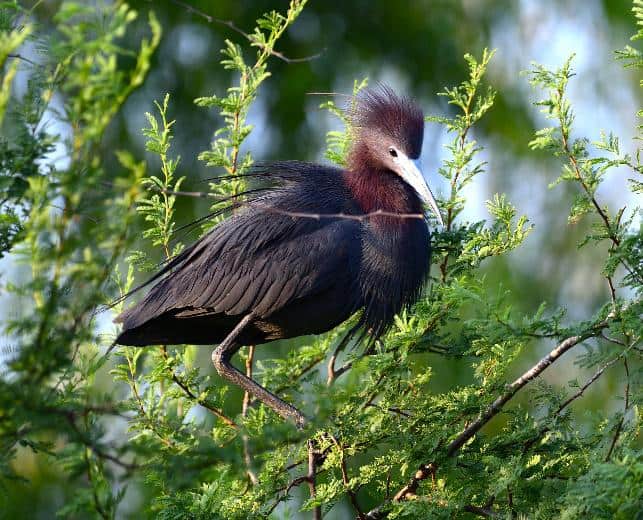
Chris Belcher of Explorist Media writes, “Where have all the Herons gone”, sharing his thoughts about the birds that are no longer present at Brackenridge Park-one of three parks in the City of San Antonio with water sources where ongoing harassment of migratory birds continues.
Belcher writes, “Had we given up the natural beauty of nature in our carefully crafted urban environment for our own convenience or as some insisted because it was better for the environment if the birds weren’t there.” “The morning of July 9th, I finally realized, I could never explain why we chose convenience over the messy beauty of nature in a small part of our city.”
Chris continues, “Maybe someday we’ll see Great Egrets, Snowy Egrets, Little Blue Herons, Tricolored Herons, Great Waterbirds- Egrets, Herons and cormorants free to nest within the borders of San Antonio. I’m afraid that I may not see that day. But I’ll keep exploring the San Antonio Metropolitan area and finding those places where humans and nature have come to exist side-by-side. Areas where the diversity of wildlife in our city makes it a great place to live.”
Where Have All The Herons Gone

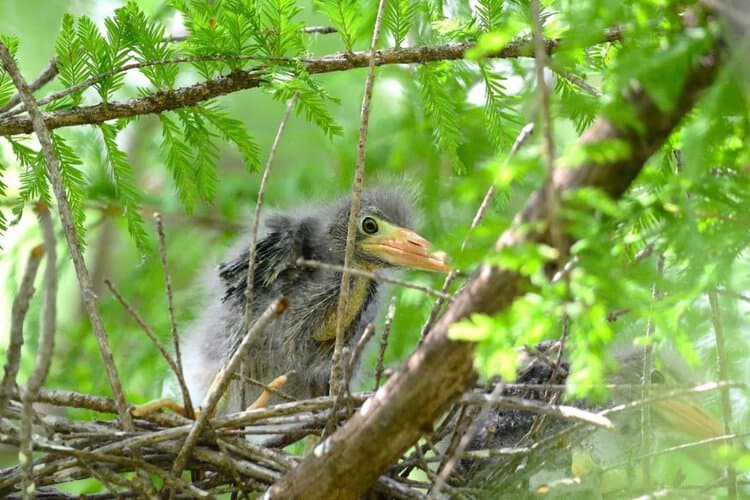
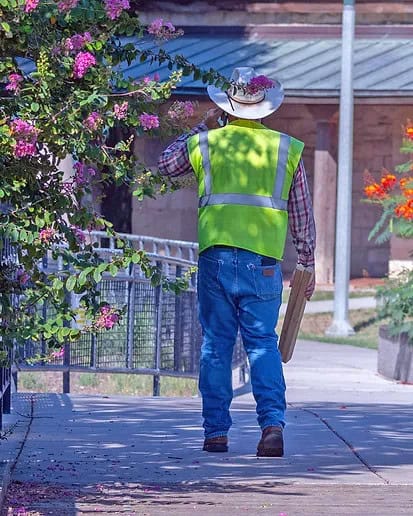

The “Beast”
Beastly is described as “unpleasant, cruel and unrestrained.”
How can a city be so “Beastly” and cruel towards migratory birds that only come here to breed?
Cruel: Willfully causing pain or suffering. Inhumane: without compassion; cruel.
The Egrets and Herons of San Antonio (COSA) were chased out of Brackenridge Park in 2022. The birds then graced the trees of private property that year thanks to the actions of the COSA and the USDA’s Wildlife Services known for killing millions of wildlife a year. The Egrets and Herons had nested in Brackenridge Park for over a decade.
Egrets, Herons and Cormorants at Elmendorf Lake Park-Bird Island were chased out of the park in 2019/2020. The birds had nested at Elmendorf for around 50 years according to residents. We suspect the birds followed their friends to Brackenridge Park in 2020.
The harassment methods observed and documented now in three City of San Antonio Parks include EPCDs-Explosive Pest Control Devices, blanks shot at the birds and contractors banging two by four boards to frighten them. The removal of the birds from city parks is without public engagement or research on the impact to the ecosystems or adverse effects to the birds listed as a Species of Greatest Conservation Need in Texas, the Snowy Egret, Little Blue Heron, Tricolored and Green Heron. The Little Blue Heron is listed as a Species of High Concern signifying a species known or believed to be declining, with additional known or potential threats to its population.
June 7, 2024, a resident sitting on a park bench watches a Tricolored Heron and Snowy Egret forage for food in the San Antonio River at Brackenridge Park recalls the pain experienced as an explosive cartridge shot through the air in the direction of where the birds were standing in the water. Contractors banging two by four boards followed to ensure the birds could not continue their search for food-Beastly!
Contractors have banged two by four boards at the birds to chase them out of the river at Brackenridge Park for the last six months as the birds foraged for food, tried to drink water or wet their feathers to cool down their body temperature due to our extreme temperatures.
Extreme heat can lead to the death of birds and loss of offspring. Ambient temperature is usually lower than the bird’s body temperature, and the bird’s metabolism produces heat to keep warm. But when the outside air rises above 104 degrees(F) the bird’s metabolic heat will cause it to get too warm.
Residents have even observed contractors throwing ROCKS at Yellow-Crowned Night-Herons foraging in the river and perched in a tree at Brackenridge Park! How cruel!
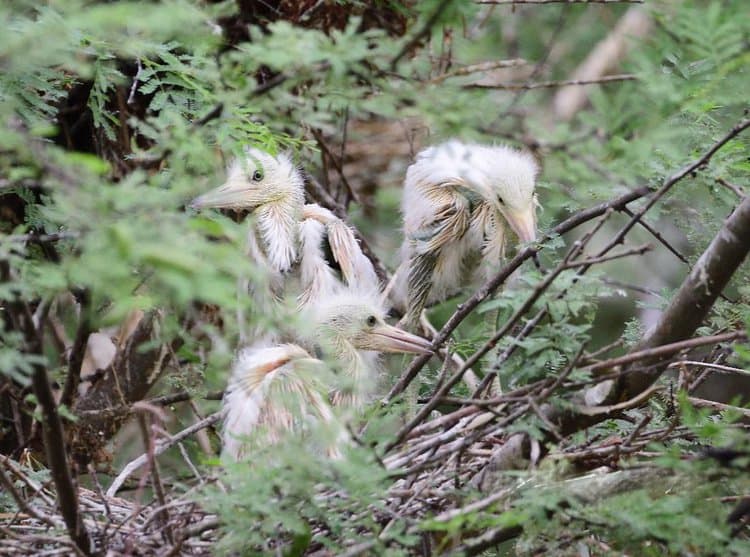
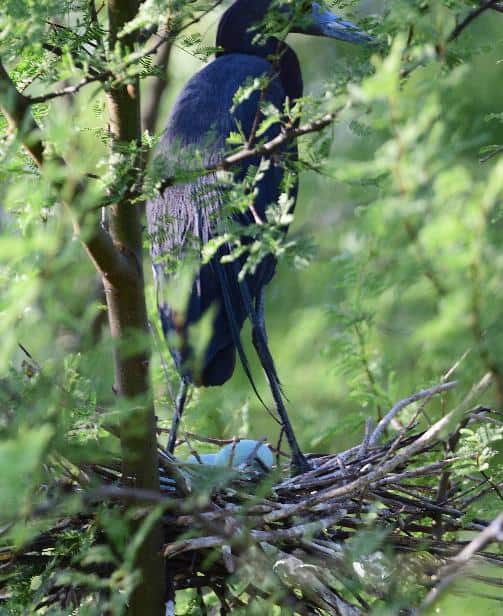
Contractors now bang two by four boards to harass the birds at Woodlawn Lake Park. Initially around 150 feet or so from the nesting birds. And, while birds lay on eggs and with babies in the nest, explosives were shot-mapped at around 200 feet away, too close for those poor baby birds. A nest of three Snowy Egret chicks was lost shortly after explosives scared them out of the nest on June 23rd. Three Little Blue Heron nests were abandoned that week after the explosives were shot off nearby just a few hundred feet from the nesting birds. But why?
The Beastly City of San Antonio does not have to continue to be a Beast, do they?
The City of San Antonio has ignored complaints and requests by residents to stop the harassment that has also adversely affected people. Reports of injury sustained by residents with disabilities were dismissed. At a meeting in April residents described explosives flying over families with children! Lori Houston, Assistant City Manager stated, “They are not going to stop!”
Young Egrets and Herons now fly from tree to tree to forage for food around the water’s edge at Woodlawn Lake Park as they wait to migrate south. The young birds now face the noise of banging boards! The disgust of watching the continued cruelty towards these birds that we share with other countries has garnered sympathy from residents living near the park and from the League of United Latin American Citizens along with others fed up with the Beast!
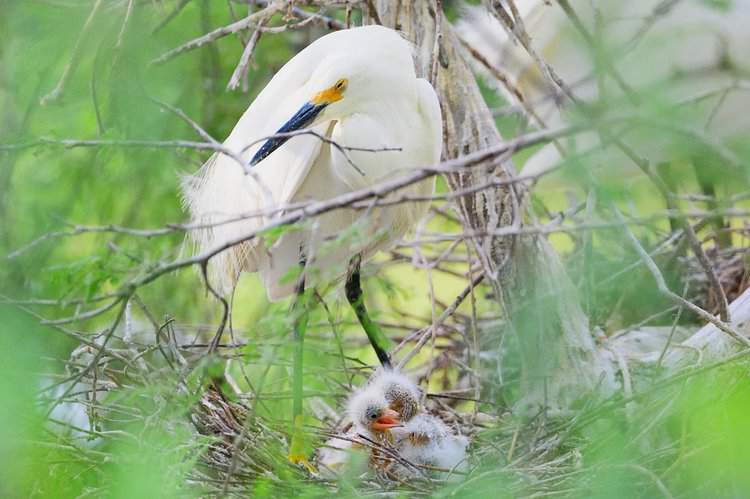
“Protecting birds is vital both for their own sake and for the wider ecosystem, according to Andrew Farnsworth a migration ecologist at the Cornell Lab of Ornithology.
“The whole canary-in-the-coalmine euphemism is true. Birds are good bioindicators and proxies for ecosystem health.” (Courtesy of Andrew Farnsworth)
As for me, I’d rather see the beauty of the birds and contribute to their conservation than see the on going harrassment at the expense of those of us who prefer the Beauty to a Beastly City!
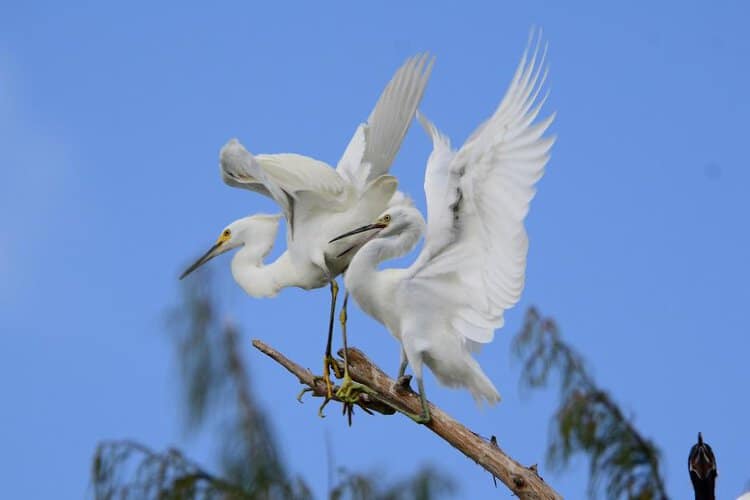
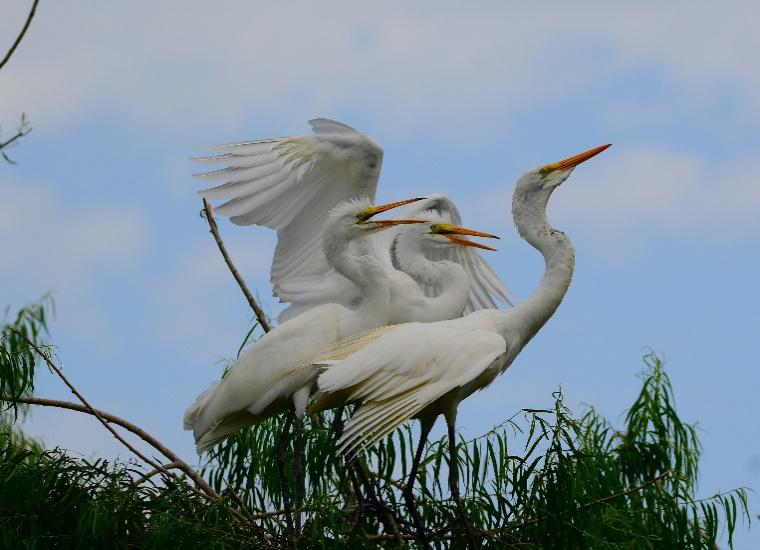
“It’s heartbreaking that these birds have not been allowed to peacefully nest and raise their babies in San Antonio, and that more will be lost because of the unethical harassment the city is allowing,” said Lisa Levinson of In Defense of Animals. “It’s even more disheartening that city officials refuse to listen to public input or engage in a dialogue that could lead to peaceful coexistence, which residents clearly support. We’ll continue to push for resolution on this.”
You can be a voice for the beautiful Migratory Birds in San Antonio by clicking on the links below to learn more about how you can help.
World is ‘on notice’ as major UN report shows one million species face extinction
Thousands Join San Antonio Residents in Call to Stop Harassing Migratory Birds
Stop San Antonio’s Assault on Migratory Birds!
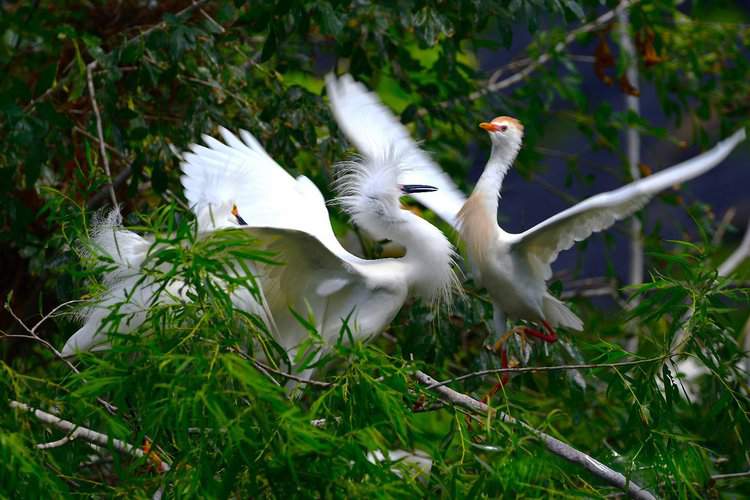
What you can do
Help to save wildlife by donating as little as $1 – It only takes a minute.
Alesia Garlock
Wildlife / Environmental Advocate! I fight to protect nature. Informing the public of hidden agenda!
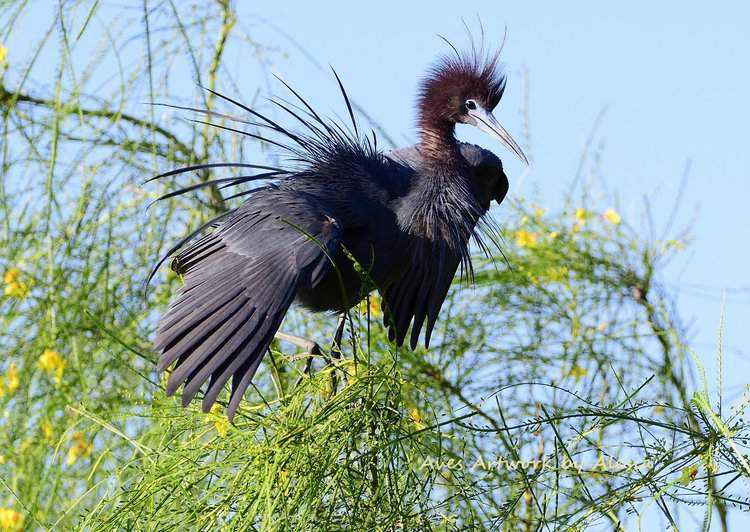
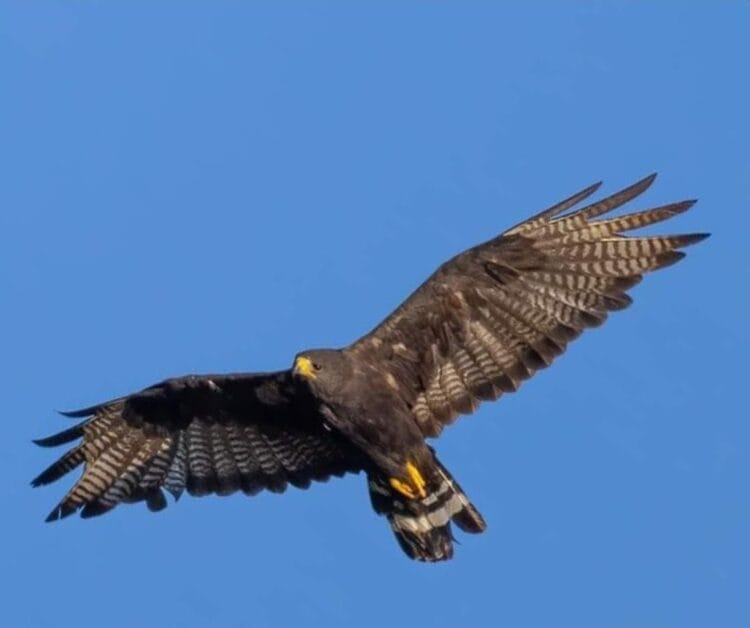

Leave a Reply